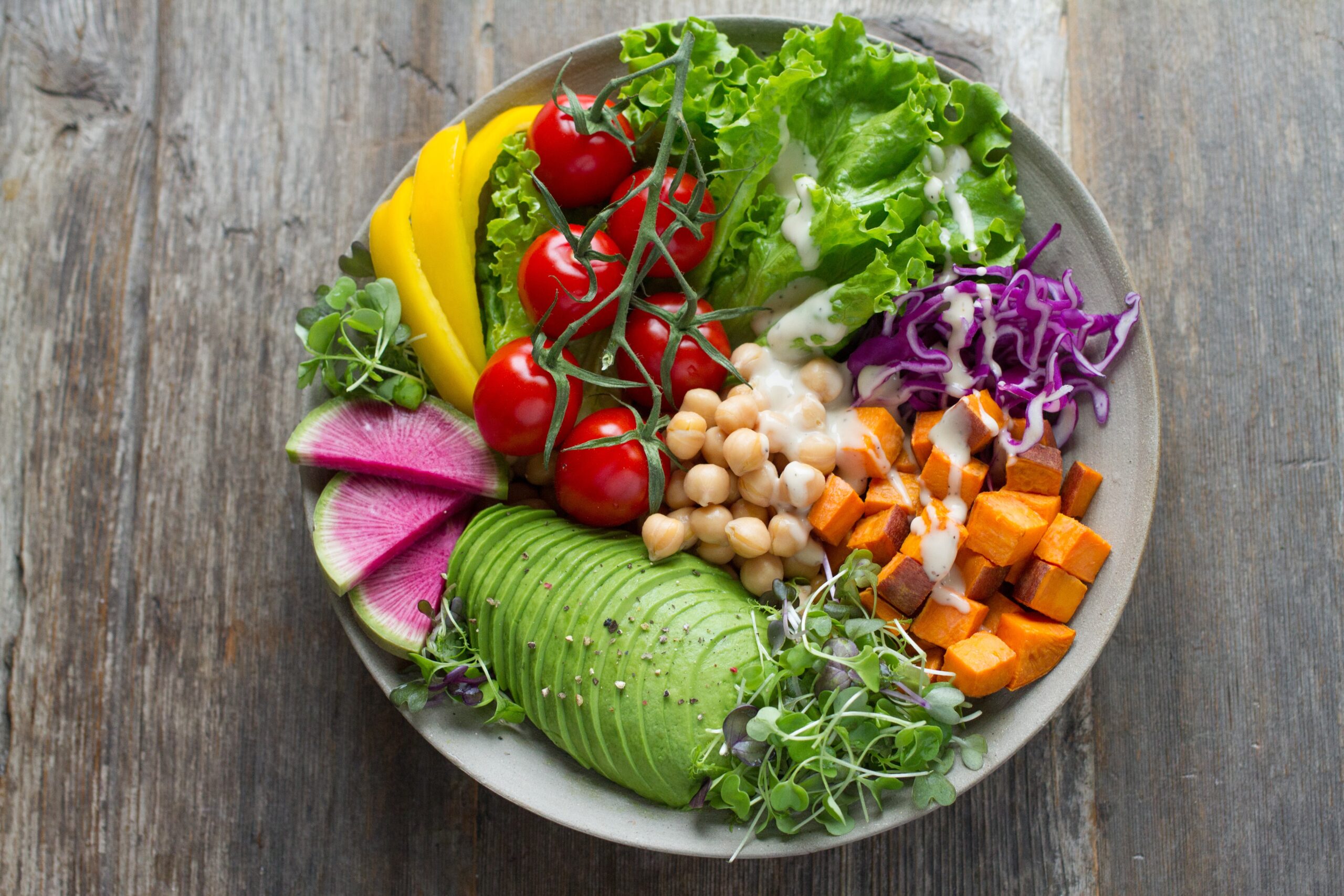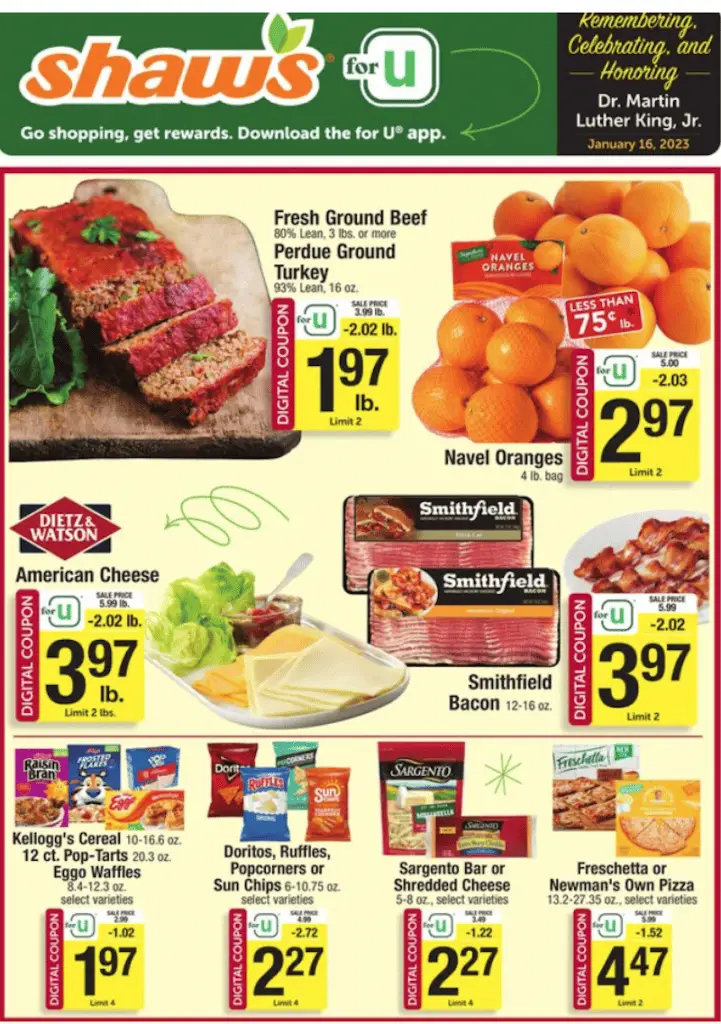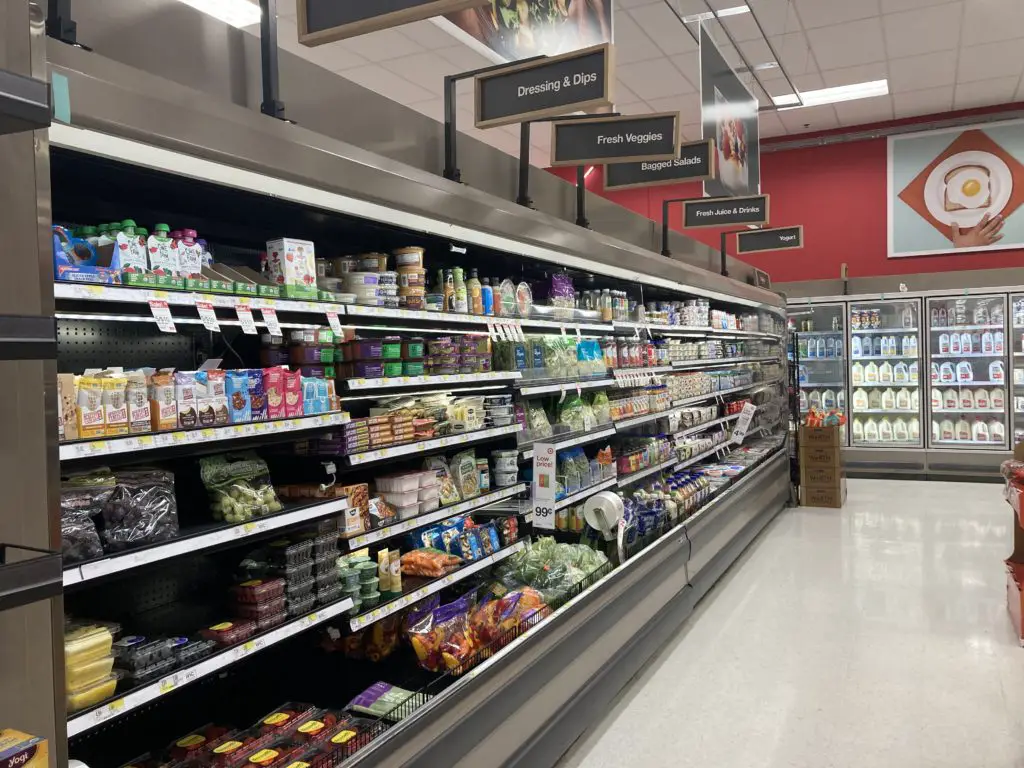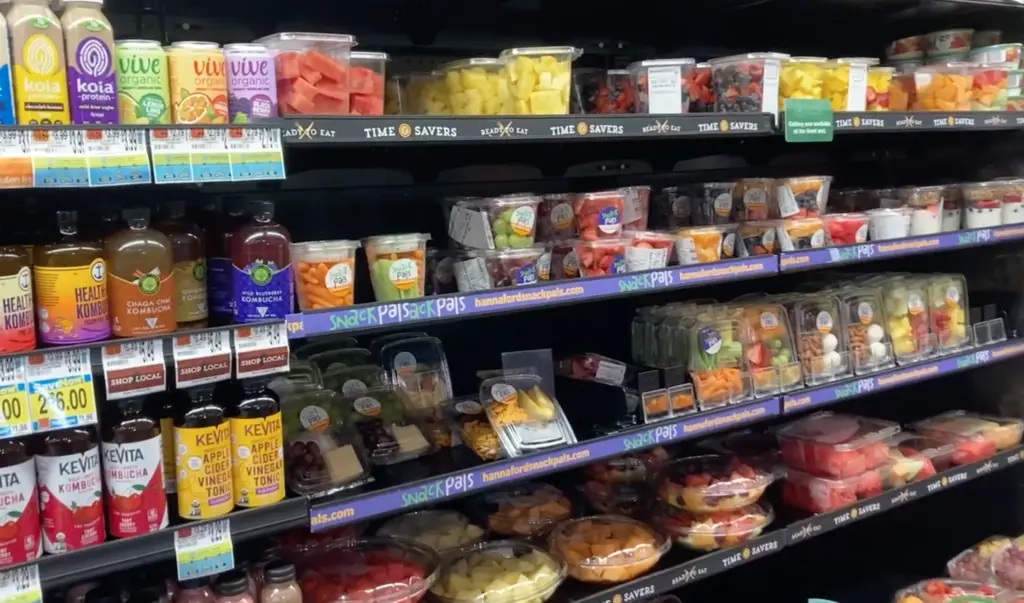Let’s face it. Food prices are insane right now. The USDA* confirms that groceries costs at least 7.1% more this year compared to last. And if you were already on a tight grocery budget, you need to save money now more than ever.
Unfortunately, most of the articles about saving money on groceries offer the same tips shoppers have been using for decades. Namely, buy in bulk, use coupons, and cook everything from scratch. Those tips certainly aren’t wrong, but they also might not work for every family and situation. Not only that, but it’s 2023, and there are way more strategies available now than there used to be.
There are plenty of strategies I’ve been testing, checking, and adjusting for years to feed my family of five on a budget. There are enough ways to save money on groceries that every single person can adopt at least two or three, and likely more. Today, I’ll share all the tips, tricks, and hacks I’ve proven save me money and keep my grocery bills around $125/person per month, even with inflation!
Of course, there’s no way you can use all of these strategies every single week. Neither can I! But I’ve organized this article to start with the most impactful tips, the ones that’ll save you the MOST money on groceries. Focus on some of the first methods, and add more strategies when you have time to learn or need to save even more.
(And if you need to save money on EVERYTHING, not just food, I’ve also written an article about 75 NEW Frugal Living Tips to help you save even more!)
So, if you’re ready to start saving some serious dough (pun intended), let’s get right to it.
1. Keep a price book.
My absolute favorite method of saving money on groceries is to know my local prices. I do this by comparing stores, different brands, and different size packages on my phone in a spreadsheet called my “price book.” Knowing the best price around keeps me from spending more than I should and only spending when prices are at their lowest.
In fact, I’ve done the math. I estimate that keeping a price book (and knowing where to shop, which I talk about next) has saved me roughly $5,000/year on groceries, compared to how I used to shop!
I’ve written a free guide to creating your first price book, including a free downloadable template, if you’d like to try making one yourself.
2. Shop at the right stores.
Using a price book (and comparing with people who live elsewhere around the country), I’ve noticed that some stores are cheaper than others for the majority of products. For example, paper products and dry goods are usually cheapest at Walmart or bulk stores. Meanwhile, my research shows that Aldi tends to have the best everyday low meat prices (though stores with loss leader sales can sometimes be cheaper, but I’ll get to that in a second.)
Of course, no store will have the best price on every item, but it’s worth getting to know which stores in your local area will be cheapest based on what you personally buy most weeks.
3. Take inventory first.
Is there anything worse than buying a package of chicken, only to find you already had one at home? Before you leave the house, take a five minute inventory of what’s in your fridge, freezer, and pantry. It’ll give you a sense for what items you already have, what you really need, and what items need to be used up before they go bad.

4. Make a food budget- and stick to it.
This one might sound obvious, but you’d be surprised how many people don’t have a set budget and instead just rely on their shopping habits or try to estimate.
If you’re unsure where to start or what amount to budget, you can check the USDA’s “Cost of Food at Home” charts. They show what a nutritious diet might look like at four different price points (liberal, moderate, low, and thrifty), based on the current costs of food.
However, don’t think their “thrifty” plan is as low as you can go. My family spends 40% less of what the thrifty budget estimates my family should spend, and still eats quite healthfully.
When you are budget grocery shopping for the first time, don’t immediately set an extremely low food budget. Start slow, or you’ll likely burn out. Write down what you think you currently spend each month. Then next month, set the food budget at $25, $50, or $100 lower. Continue shaving a bit off each month until you reach something sustainable.
And if you just want me to offer a dollar amount for a rule of thumb, ok! I– and many other frugal bloggers I’ve met on the internet– find something around $100 to $125 per person per month is perfectly manageable once you’ve got some of these money-saving skills down. Add more if you’re in a truly high cost of living area or are on a very expensive specialty diet. (And feel free to add 20% more if you’re only a single person or feeding just two people. Bigger families can spend less per person by buying in bulk.)
Finally, don’t forget to actually stick to the budget you set! This might mean putting back one or two unnecessary items in a shopping trip. Or it might mean getting creative when you’re out of butter and your recipe calls for it. But creativity is one of the key elements to saving money, so it’s a great skill to practice.
5. Buy generic.
Do you know the difference between store brand oatmeal and Name Brand Oats? It’s literally nothing. They all get their oats from the same factory and slap different labels on the packaging. The reason name brands are more expensive is mostly due to marketing costs, which generic brands don’t have. Even Rachel Ray agrees.
So why wouldn’t you save $1-3 per item, just by switching to the store brand product? It might not seem like much at first, but those savings really snowball when you consider how many different items you buy in a week.
The few exceptions are foods where the food IS the brand. The best example is Oreos. “Chocolate sandwich cookies” just aren’t the same, and we all know it.
6. Focus on “loss leader” sales.
The stores you think are too expensive do have one bright spot- their weekly sales! Stores like Albertsons, Kroger, Meijer, Publix, and more offer weekly “loss leader” sales. This means they sell items at a loss to themselves to lead you into the store in the hopes that you’ll buy more expensive products, too.
You can find the loss leader sales on the top of the front page of their flyers (either published or on their apps). If you take advantage of these sales without doing ALL your grocery shopping there, you’ll come out ahead.

And if you’re still confused about what sales to ignore or take advantage of in the grocery store, I’ve written an article walking you through which grocery store sales are worth it.
7. Use AI to meal plan.
If the phrase “meal planning” stresses you out, you can try to ask a free AI chatbot like Bard, Bing AI, or ChatGPT to write your meal plans for you! You can tell it how many people it needs to feed, what foods you have on hand, any allergies, and even the types of foods you like (Asian, Italian, etc) and it will spell everything out for you!
Once you’ve inventoried the foods you already have at home, you and your favorite AI can make a loose meal plan for the coming week. This doesn’t have to be complicated or unchangeable. Just ask for four, five, or six meals based on the following questions:
- What types of meals can you make that use up the ingredients you have?
- What foods will you, a partner, or your family eat?
- What do you have time to cook, based on your schedule this week?
So for example, you might ask a chatbot: “Write me a meal plan for five quick dinners, that feeds two adults, uses up 3lbs of chicken breast and a bunch of carrots, includes at least one Mexican-style meal, and doesn’t include any shellfish.” And it can do exactly that, plus give you the recipes for the meals it suggests and a shopping list for all the ingredients.
8. Reduce food waste.
Letting food go bad and throwing it away is just like throwing away cash. To start saving more money, prioritize eating the food you already have at home.
This means eating leftovers! Or, if you don’t want to eat the same thing three nights in a row, learn to jazz them up. Soups, stir frys, burritos, and casseroles are all great types of meals that use up the leftovers that accumulate throughout the week.
9. Download your store’s app.
Grocery stores want nothing more than to keep you shopping at their store- and ONLY their store- every week. And to do that, they’ll offer their absolute best deals and discounts to shoppers who are loyal enough to download their app.
You can score free items, cash back every time you buy generic products, gas points, exclusive coupons, and more from your store’s app. For example, in just the last five months, I’ve saved $178 with cash back, coupons, and free products thanks to my grocery store’s app, for an average of $35/month in savings.
10. Use those cash back apps, too.
You’ll notice this tip isn’t first on my ultimate guide, and that’s on purpose. No app can do all the money-saving work for you, but for certain shoppers it can really work.
If you already buy a lot of name brand items, or love trying out new products, then using apps like Ibotta or Fetch can put some more cash (or some gift cards) in your pocket. And sometimes they offer rewards like bonus points just for shopping at certain stores or buying things like “any brand of bread.”
However, if you’re already buying mostly generic food brands, you’re unlikely to earn much back. Even apps like Fetch, which allow you to submit any recipe and get points, only guarantees the equivalent of 2.5 cents per receipt!
(And if you’d like to try a cash back app and want some bonus points to kick things off, you can use my referral codes to help support my money-saving blog. Thanks! Ibotta code “qrrmmai” for $5. Fetch code– “YM42W” for various bonus points.)
11. Shop with a list.
Speaking of shopping lists, you absolutely need a list when you shop. If you simply wander around the store and just grab what looks good, your bill is going to be at least double what it could be otherwise.
List what items you need every week (milk, bread, bananas, etc), what ingredients are missing for meals you plan to make, and any pantry staples you’re running low on (like spices, flour, etc). Don’t forget to think about what you’ll be eating for breakfast, lunch, dinner, AND snacks. Once you have your list, stick to it!
But if you really love the impulsive thrill of “getting what looks good,” at least limit yourself to a certain number of additional items. That way, your bill doesn’t balloon out of control, and you won’t buy more than you can eat either.

12. Keep a running tally in the store.
Can you keep track of exactly how much you’re spending during the weekly shopping trip, with dozens of items in your cart? I know I can’t.
Keeping the calculator app open on your phone (or even bringing an old school calculator) can really help you see how much things are adding up. Otherwise, you might not realize how much over budget you are until the end of the trip, and by then you’re too tired to figure out what to put back without screwing up your weekly meal plan.
What’s more, adding up purchases as you go will make you less likely to buy impulsively. When you know adding that extra bag of chips will make the total amount go up by a whole $4 or $5, you’re more likely to realize you don’t need it that much.
13. Order curbside pickup.
Grocery stores are designed to get people spending as much money there as possible. They use tricks like putting fresh, colorful produce at the front so you’ll start your experience feeling smart and healthy. They organize the food in long, winding aisles designed to keep you shopping longer, which increases the chance of you buying more. And finally, they’ll put quick treats like candy or beef jerky at the end, when you’re most likely to be hungry and impulsively buy just one more little thing.
Because of all these marketing tricks, using the free curbside pick up option can often save you a ton on your grocery bill. And even if there’s a small, flat fee associated with the service, the reduced temptation to fill your cart might still be worth it.
What’s more, ordering online helps you stick to your budget. Every time you add a new item to your cart, you see the grand total for your order immediately. No more shopping with a calculator!
But watch out for the “do you want to add…” or “you may also like” popups at the end, however. This is the online shopping equivalent of an impulse buy at the checkout. Stay focused!
14. Stock up on sales.
In general, you should always try to stock up when foods are at their lowest price. This is especially true with more expensive items like meats. As I share in my guide to saving money on meat, buying truly on-sale meat is a fantastic way to save money on groceries.
If there’s a big holiday coming up, look out. You can score insane deals on celebratory meats, since they’re often offered as loss leaders. Generally, you’ll see the best sales on…
- Turkey around Thanksgiving
- Hams around Christmas and Easter
- Corned beef around St. Patrick’s Day
- Ground beef around Memorial Day, Labor Day, and the Fourth of July
- Steaks and ribs around the Fourth of July (and much of the summer)
15. Scale back the “fancy.”
If you’re used to eating all organic food, consider just sticking to the “dirty dozen.” If you’re used to eating the more expensive meats like steak, try eating more chicken or pork.
You don’t have to feel deprived when doing this, either. Consider looking up recipes from African, South American, or Asian traditions that use more simple, whole foods (which tend to be cheaper). You can do a culinary world tour!
And speaking of foreign cuisines…
16. Shop in unexpected places.
If you’ve never checked out your local ethnic food store (be it Asian, Hispanic, Halal, whatever), you really should. Especially if you’re trying to save money on produce, you can score big when you shop at the stores that cater to specific ethnicities.
For example, I recently bought an entire bag of awesome oranges for $0.65 at my local Asian market. In 2023. You really can’t beat that!
17. Eat more vegetarian or vegan foods.
When my husband switched to a whole food, plant-based diet over a year ago, I was shocked by the change in our grocery budget. We Americans typically spend SO MUCH MONEY on meat!
While I do still eat meat, we eat far less of it as a family than we used to. There are plenty of marinades, sauces, and natural flavorings that can jazz up even a simple, meatless dinner like stir fry, pizza, or tacos.
And if you can’t convince everyone in the family to give up on meat even for one meal, that’s ok. Even scaling back the amount of meat in a single dish can really help your food budget. Try swapping out a whole steak and potato meal for shredded steak sandwiches, or a chicken breast and salad side with a chicken pot pie.
18. Skip convenience foods.
This means passing over pre-cut and pre-washed produce. Buying a whole watermelon will always be more cost-effective than buying a package of diced pieces, because the store has to factor in the cost of labor (washing, cutting, sorting) and packaging to the convenience version. The same goes for the salad bar, ready-to-eat freezer meals, and even the beloved rotisserie chicken (except at Costco, where it’s a loss leader to get you in the door).
If you’re looking for ideas on what kinds of meals you can make that are cheap but still convenient, I’ve got a great compilation of super cheap meals for families

19. Eat before you leave home.
You always, always spend more money when you’re hungry at the store. Steak? Fritos? An entire apple pie? Everything looks tastier when you’re hungry. Instead, eat at least a small, filling snack before leaving, and you’ll have an easier time saying no to impulse buys.
Here’s a trick if you accidentally went shopping on an empty stomach. Before you buy something that’s not on your list, take a picture of it. That will remind you of what looked good in the store, and you can decide next week whether it deserves a place on that week’s grocery list.
20. Shop alone.
If you can’t use the curbside pickup, or your area doesn’t offer it yet, there’s still more you can do to cut back. Shopping without kids or impulsive partners can be better for your wallet. That way, no one else is sneaking extra groceries in your cart, no one is whining about Cocoa Pebbles, and no one is distracting you from comparing prices or reading labels.
21. Bring reusable bags.
If you have to pay for bags at your store, bringing your own adds up over time! Not only that, but reusable bags (the sturdier “made of recycled materials” or fabric kind, not the glorified disposable plastic type) are plain better. They hold more and are less likely to break and damage the food you just bought.
Just don’t forget your bags! Tie them to your keychain. Or hang them obnoxiously on the doorknob of your main door. I knew one woman who drove with the bag handle wrapped around her arm so she couldn’t leave the car without them.
22. Shop the edges of the store.
Finally, I’ll remind you that stores put most of the grocery essentials around the perimeter, or edge of the store. Produce, bread, eggs, milk, and meats are found around the walls in nearly every grocery store in America. Meanwhile, the non-essential ice cream, breakfast cereal, and wine coolers are in the middle aisles. If you’re really in a pinch, try only buying food that’s on the edges of the store and minimizing buying food from the aisles.
*USDA source: https://www.ers.usda.gov/data-products/food-price-outlook/summary-findings/
That’s all from me. Now go out there and save a few hundred dollars on your groceries!
If you’d like to know the next time I post money-saving content for you and your family, be sure to subscribe to my weekly (or every other weekly) newsletter below.
